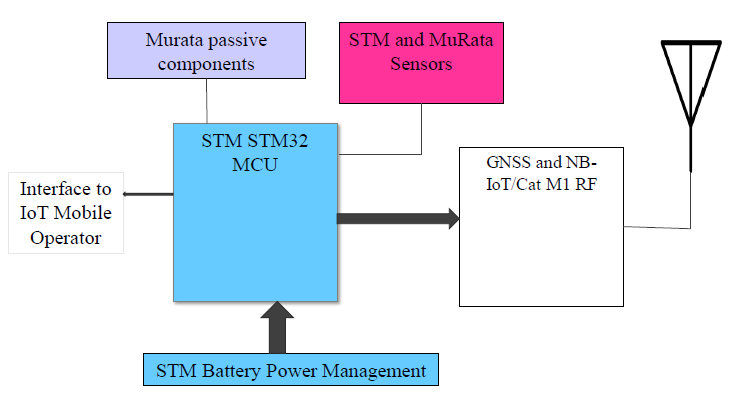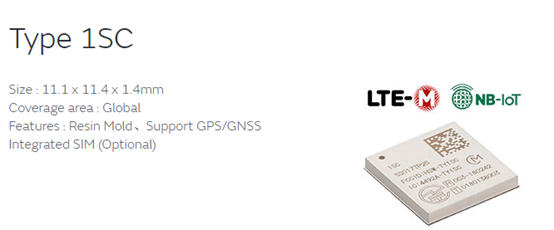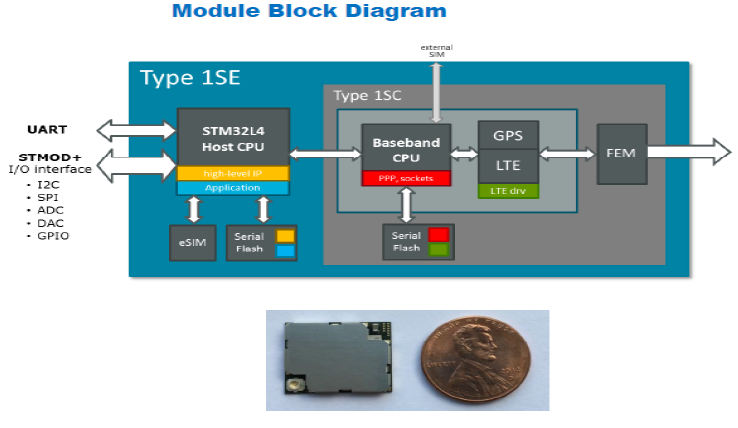A Global Navigation Satellite System (GNSS) is the general name of various satellite positioning systems. If it can be combined with the NB-IoT and Cat M1 networks, the positioning of people and devices will be more accurate and fast. In this paper, we will introduce the development of the GNSS market, and the positioning solutions combined with GNSS, NB-IoT/Cat M1 introduced by Arrow Electronics (Arrow), STMicroelectronics (STM), and MuRata.
The market potential of GNSS applications is amazing
GNSS is the general name for a global satellite navigation system. GPS (Global Positioning System) is just one of the positioning systems introduced by the United States, and others include BDS (China's Beidou satellite navigation system), GLONASS (Russia's satellite positioning system), Galileo (Europe's Galileo system), etc. At present, many GNSS solutions usually support multiple positioning systems to improve positioning accuracy and compatibility.
The cumulative turnover of the GNSS market in 2019-2029 will be as high as 2,525 billion Euros in accordance with the GSA GNSS report in 2019, of which 55.0% will be used for road applications, 38.3% for consumer markets, and 6.7% for other applications. The GNSS products covered include devices and related services, and the market space is quite amazing.
LTE-M has low power consumption and low cost
First of all, several technical terms will be introduced to facilitate the understanding of products and technologies.
LTE-M is the abbreviation for LTE Cat-M1 or Long Term Evolution (LTE, 4G) category M1. This technology is used for Internet of Things devices, and can be directly connected to 4G networks (such as mobile network operators (MNO) AT&T or Verizon) without a gateway, and usually without using batteries. LTE-M including eMTC (enhanced machine type communication) is a low power wide area network (LPWAN) radio technical standard developed by 3GPP, which is used to support various cellular devices and services (especially machine-to-machine) and internet of things applications. The Global Mobile Suppliers Association reported that more than 100 operators have deployed/started NB-IoT or LTE-M networks in March 2019. LTE-M has a higher data rate and supports mobility and voice over the network, but compared with NB-IoT, it needs more bandwidth and can't be put into the guard bands such as NB-IoT.
The main features of LTE-M technology include supporting GPS-free, low-power periodic tracking applications during positioning, and being small in size, which can attract wearable devices without a cellular connection. It has passed PTCRB/GCF certification and improved its global interoperability with global wireless network operators in IoT applications. By adopting a protocol specially designed for low current consumption, the battery life can be extended to be more than 10 years, and it can be connected at a very low cost, supporting HTTPS and MQTTS protocols.
NB-IoT and LTE-M have complementary characteristics
Narrow-band Internet of Things (NB-IoT) is a standard-based low-power wide-area (LPWA) technology, which aims to realize various new IoT devices and services. NB-IoT improves the power consumption, system capacity, and spectrum efficiency of user devices significantly, especially in deep coverage. NB-IoT uses a subset of LTE standards, but limits the bandwidth to a single narrow band of 200kHz.
NB-IoT technology can provide data connections with a lower bandwidth at lower cost, and can be used for applications where network delays are not important. Meanwhile, it has passed PTCRB/GCF certification, which improves its global interoperability with global wireless network operators in IoT applications. NB-IoT can be used in areas that may lack LTE-M coverage, and vice versa, unless security and mobility, it is crucial to your application.
Integrate GNSS modules to accelerate product development
Arrow Electronics integrated an STM chipset and MuRata module, and launched its MuRata GNSS solution with NB-IoT/Cat M1 dual mode to speed up the development of GNSS products by manufacturers, which can improve the accuracy of GNSS applications and greatly reduce the size of products.
MuRata has been developing a compact module that bundles STM32 MCU with GNSS and dual-mode NB-IoT/Cat M1 and eSIM. This compact module can support the NB-IoT/Cat M1 networks of mobile operators in different regions for GNSS personnel or device tracking scenarios.

We can design and develop multifunctional, dual-mode networks, and low-power tracking equipment according to different customer requirements by combining STM with MuRata's sensors, MuRata passive components, and STM battery management products. Arrow ESC can also provide support for the identified alpha customers through reference design in firmware and hardware development.
The Type 1SC module supports LTE-M protocol
The Type 1SC module introduced by MuRata supports the B5/B8/B12/B13/B14/B17/B18/B19/B20/B26/B28/B1/B2/B3/B4/B25 LTE-M PSM and eDRX modules. The 1SC module has passed FCC/IC certification and PTCRB (5.38) and GCF (3.73) certification.

Type 1SC is a new, compact and low-cost LTE-M module supporting cellular LTE-M network protocols. The new stand-alone module measures only 11.1 x 11.4 x 1.5 mm (maximum), is packaged in a silver resin shield, and includes a transceiver with FEM module and external flash memory. An integrated TCXO with robust low drift thermal characteristics provides an accurate clock source for RF transceiver.
Type 1SC-DM supports both LTE-M and NB1 protocols
The Type 1SC-DM supports B5/B8/B12/B13/B14/B17/B18/B19/B20/B26/B28/B1/B2/B3/B4/B25 LTE-M PSM and eDRX modules, passes FCC/IC certification, and supports 3GPP Rel. 13 modulation with PTCRB (5.42) and GCF (3.77) certification.
Type 1SC-DM is a new, compact, and low-cost LTE-M module, which supports cellular LTE-M and NB1 network protocols. The new stand-alone module measures only 11.1 x 11.4 x 1.5 mm (maximum), is packaged in a silver resin shield, and includes a transceiver with FEM module and external flash memory. An integrated TCXO with robust low drift thermal characteristics can provide an accurate clock source for RF transceiver.
Type 1SE supports highly integrated applications

Type 1SE supports LTE B5/B8/B12/B13/B14/B17/B18/B19/B20/B26/B28/B1/B2/B3/B4/B25 LTE-M/NB1 PSM and eDRX modules, and adopts an RFIC chipset with STM32L462RE/Cortex-M processor, passed FCC/IC certification, supports 3GPP Rel. 13 modulation, and passed PTCRB(5.40) and GCF(3.75) certification. eSIM adopts ST4SIM-200M on WLCSP. You can choose to load the required operator profile through a Remote SIM Provisioning (RSP). You can choose to load the required operator information and support network connection through the eSIM, and have highly integrated (MCU, eSIM, and LTE-M/NB1 modem) certified end device with an antenna connection, which can be easily integrated with a variety of different types of applications.
Conclusion
The combination of GNSS, NB-IoT/Cat M1, and IoT applications can expand IoT devices to places lacking network signals in the past. They can be deployed as long as they receive 4G signals, truly surpassing geographical restrictions and opening up a brand-new blue ocean market for applications and services.
The GNSS and NB-IoT/Cat M1 positioning solutions developed by Arrow Electronics, STMicroelectronics and MuRata have the characteristics of small size and low power consumption, which can enhance the competitive advantage of products and speed up the development of related products, and are worthy of in-depth understanding by manufacturers interested in investing in this market.

